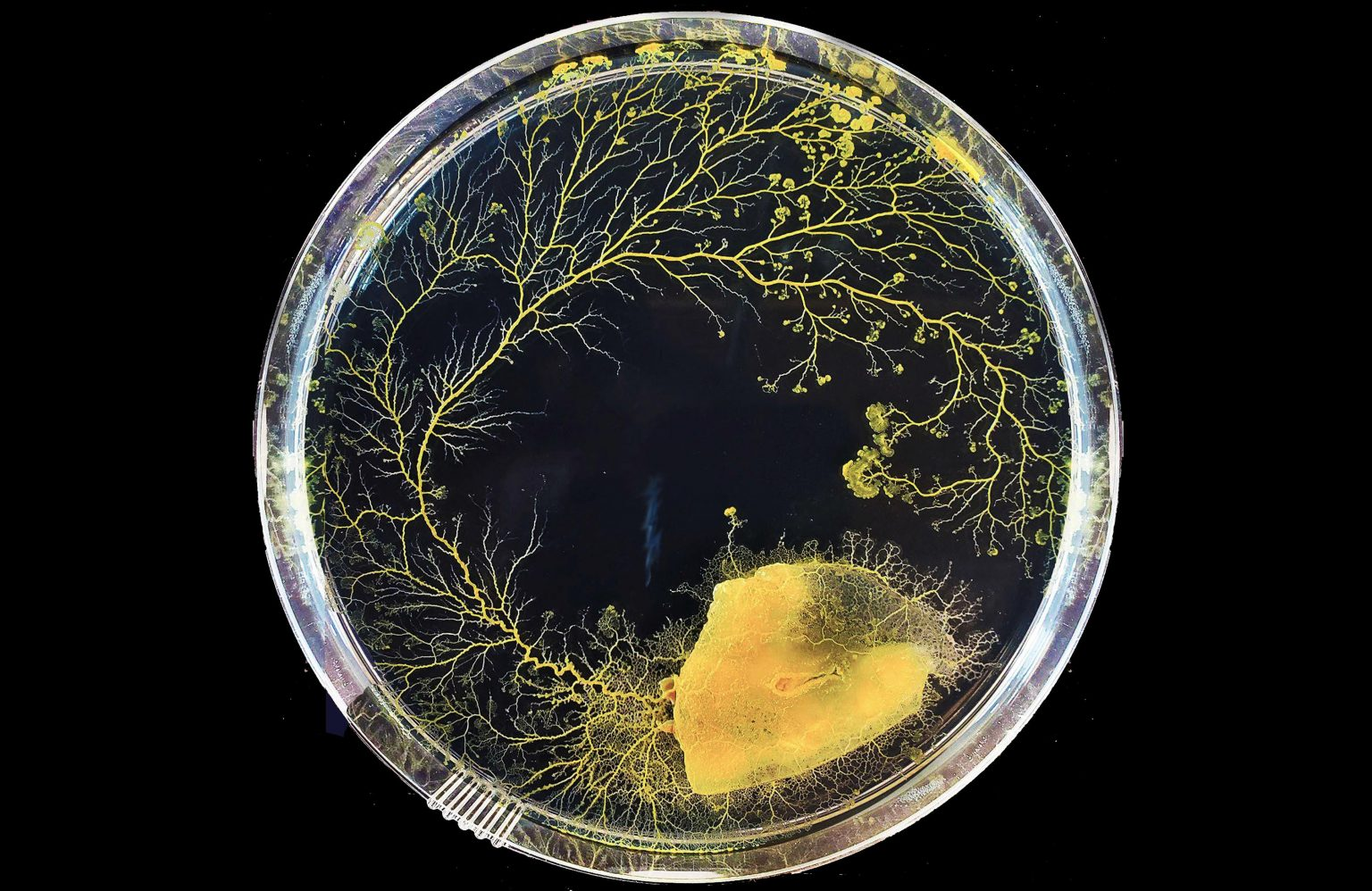"A photo of the slime mold Physarum polycephalum growing in a petri dish. Credit: Nirosha Murugan, Levin lab, Tufts University and Wyss Institute at Harvard University" (ScitechDaily, Slimy Action at a Distance: Thinking Without a Brain)
Researchers created a hydrogel brain that shows the ability to deep learning. Theoretically, the simple hydrogel can learn to play ping-pong. Or simple computer games. The problem with learning hydrogel is how to transfer information into and out of it. If that thing can be done that is a great breakthrough in robotics. These kinds of advances are things. That makes it possible to create robot amoebas. Those soft-shell robot amoebas are tools that can carry things like medicines or observation tools to places. Those are hard to reach.
The cyborg-slime molds can use the hydrogel to control their behavior. In some interesting possibilities, the system can combine this hydrogel with slime molds. That kind of hydrogel can control the actions of the slime molds. Another thing that interests researchers is slime molds. Those creatures can make very complicated decisions without brains. That thing makes them tools, that are making the next-generation robots possible.
The cyborg slime molds can have multiple applications. Those things can clean surfaces. But when researchers connect things like artificial DNA to those things, those kinds of tools can be more powerful than ever before. Genetically engineered slime molds can produce antibiotics.
The ability to store information in the DNA requires complete knowledge of the DNA and its base pairs. The ability to use DNA as data storage makes it possible to create artificial DNA that can transform any organism into another one. That thing is the ultimate tool for medical research. The slime molds can used to clean the body if the system can control them precisely.
The slime molds can create spider silk or a similar shell as corals. And that makes it possible to use them as the living patch for holes. There is also the possibility to transform genomes that make scaling bacteria make the shell over their cultures. That kind of ability makes it possible to create biological patches that can close the leaks in structures.
The slime molds can used to clean blood vessels. Or they can travel to the points where the system finds tumors. In some visions, the nanorobots can mark those tumors for the slime mold. That kind of liquid cyborg can used to destroy larger-size hostile organisms like some parasite worms or amoebas. The slime mold cyborgs can repair any part of the human body. That requires the ability to precisely control the slime molds.
Genetically engineered cyborg amoebas can cover wounds, and then clean them. In some visions, the genetically engineered slime molds can cover the burns, and then clean those wounds. And after that, those cells can transform into human skin cells. That thing requires that the artificial DNA involves three stages.
First, the slime mold moves over the wound. In the second stage, it creates antibiotics and removes dangerous bacteria. In the last stage, the DNA transforms those cells into skin cells. Those things can form any cell groups that are in the human body. The system just requires the DNA sequence that makes those cells.
https://scitechdaily.com/brainless-slime-mold-physarum-polycephalum-shows-intelligence/
https://scitechdaily.com/memory-without-a-brain-how-a-single-cell-slime-mold-makes-smart-decisions/
https://scitechdaily.com/pong-prodigy-hydrogel-brain-defies-expectations-with-deep-learning/
https://scitechdaily.com/slimy-action-at-a-distance-thinking-without-a-brain/
https://scitechdaily.com/the-next-frontier-dna-emerges-as-a-powerhouse-for-data-storage-and-computing/



No comments:
Post a Comment
Note: Only a member of this blog may post a comment.